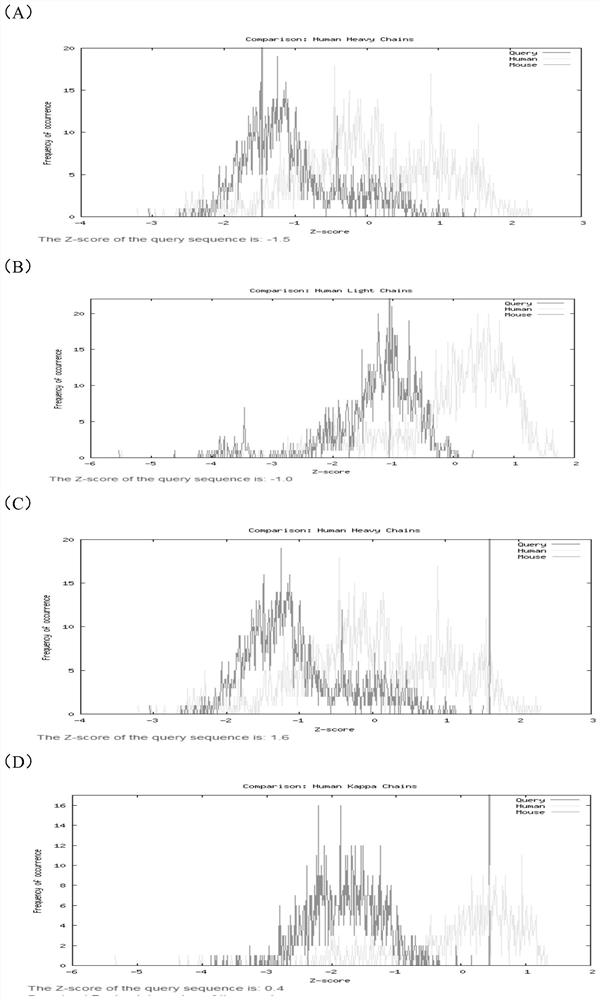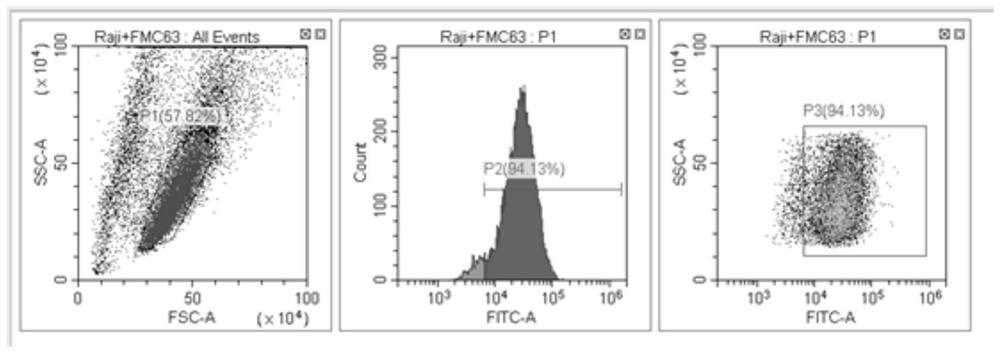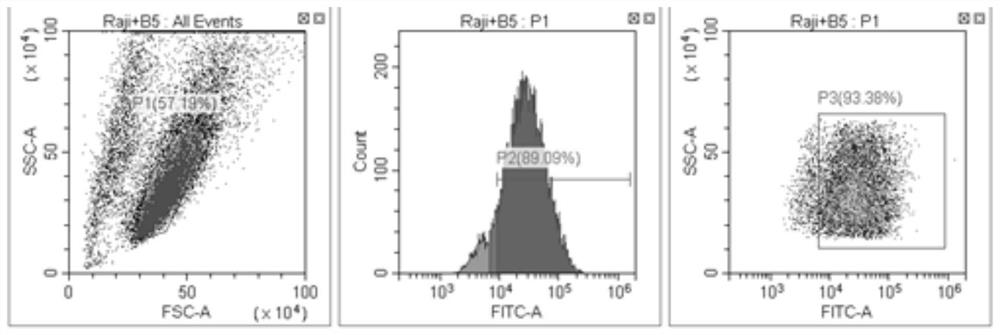Anti-CD19 humanized antibody and preparation method and application thereof
A humanized antibody and humanized technology, applied in the biological field, can solve the problems of long mouse transformation cycle and achieve the effect of improving the degree of humanization and retaining affinity
- Summary
- Abstract
- Description
- Claims
- Application Information
AI Technical Summary
Problems solved by technology
Method used
Image
Examples
Embodiment 1
[0062] Example 1 Obtaining anti-CD19 humanized antibody
[0063] 1. Construction of phage display antibody library
[0064] 1. Lymphocyte isolation and antibody gene amplification
[0065] Take a 15ml centrifuge tube, first add the same amount of separation solution as the blood sample, carefully draw the blood sample and add it to the liquid surface of the separation solution, centrifuge at 450-650g for 20-30min; It is divided into four layers from the bottom, followed by plasma layer, annular milky white lymphocyte layer, transparent separation liquid layer and red blood cell layer; carefully suck the second annular milky white lymphocyte layer into another 15ml centrifuge tube with a pipette; Add 10ml of washing solution to the centrifuge tube, mix the cells, 250xg, and centrifuge for 10min; after centrifugation, check whether the supernatant is clear, if it is not clear enough, prolong the centrifugation time; wash the cells twice with 1xPBS, add trizol to lyse the cells ...
Embodiment 2
[0088] Example 2 Humanized Antibody Gene Antibody Expression
[0089] Place all reagents at room temperature for 10 minutes before transfection, use a 6-well culture dish for the following operations; dilute 3 μg of plasmid DNA into 250 μL of serum-free DMEM medium, pipette 3-4 times; dilute 5 μL of PEI reagent To 250μL of serum-free DMEM medium, pipette 3-4 times; Note: Serum-free DMEM medium is a diluent, and serum-containing medium cannot be used for DNA and diluted PEI transfection reagent Add it all at once to the diluted plasmid DNA, and immediately pipette 3-4 times; leave at room temperature for 10-15 minutes to form a PEI-DNA complex; 18-24 hours before transfection Count and plate so that at the time of transfection, adherent cells are approximately 80% confluent; discard medium in wells and add 1 ml of fresh DMEM complete medium; prepare PEI-DNA complexes; mix PEI-DNA The solution was evenly dropped into the cell culture medium, and the PEI-DNA complex was disperse...
experiment example 1
[0091] 1. Sequence Analysis of Humanized Antibody Gene
[0092] By software analysis, the Z-scores of the heavy and light chains were -1.5 and -1.0, respectively. After humanization, the Z-scores of the heavy and light chains of B5 were 1.6 and 0.4, respectively, and the Z-scores of the heavy and light chains of D12 were 1.2 and 0.7, respectively. The Z-score of the two antibodies obtained after humanization has been greatly improved. From the results in the figure, it can be seen that the two antibodies are basically fully human antibodies.
[0093] The results of FMC63 heavy chain analysis are as follows figure 1 As shown in (A), it shows that the unmodified antibody is a murine sequence, and the Z-score of the sequence analyzed by the software is distributed in the range of the murine antibody.
[0094] FMC63 light chain analysis results are as follows figure 1 (B) shows that the unmodified antibody is a murine sequence, and the Z-score of the sequence analyzed by the so...
PUM
 Login to View More
Login to View More Abstract
Description
Claims
Application Information
 Login to View More
Login to View More - R&D
- Intellectual Property
- Life Sciences
- Materials
- Tech Scout
- Unparalleled Data Quality
- Higher Quality Content
- 60% Fewer Hallucinations
Browse by: Latest US Patents, China's latest patents, Technical Efficacy Thesaurus, Application Domain, Technology Topic, Popular Technical Reports.
© 2025 PatSnap. All rights reserved.Legal|Privacy policy|Modern Slavery Act Transparency Statement|Sitemap|About US| Contact US: help@patsnap.com



